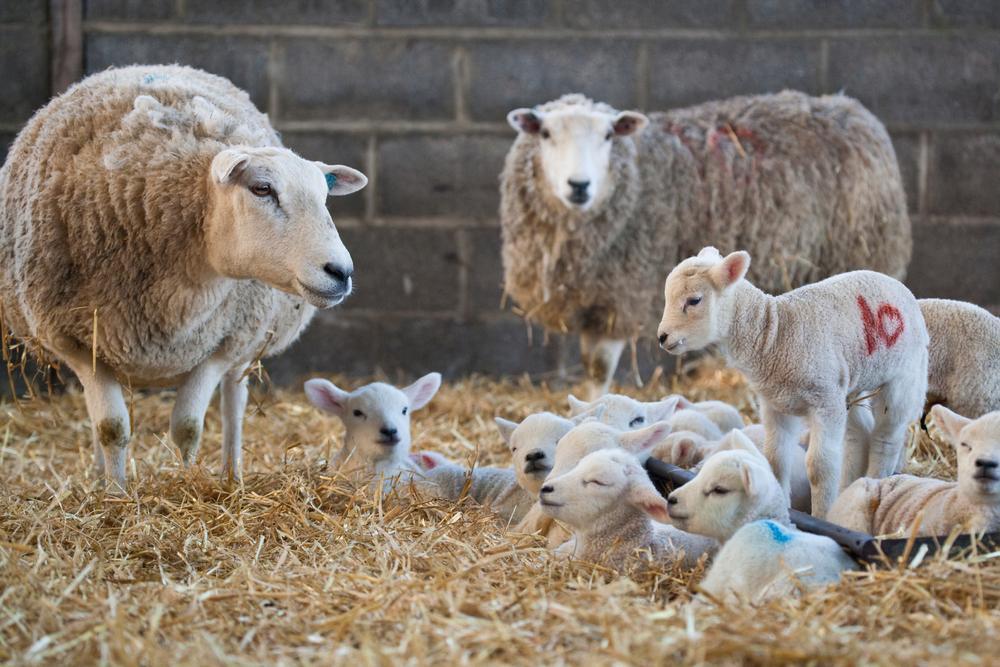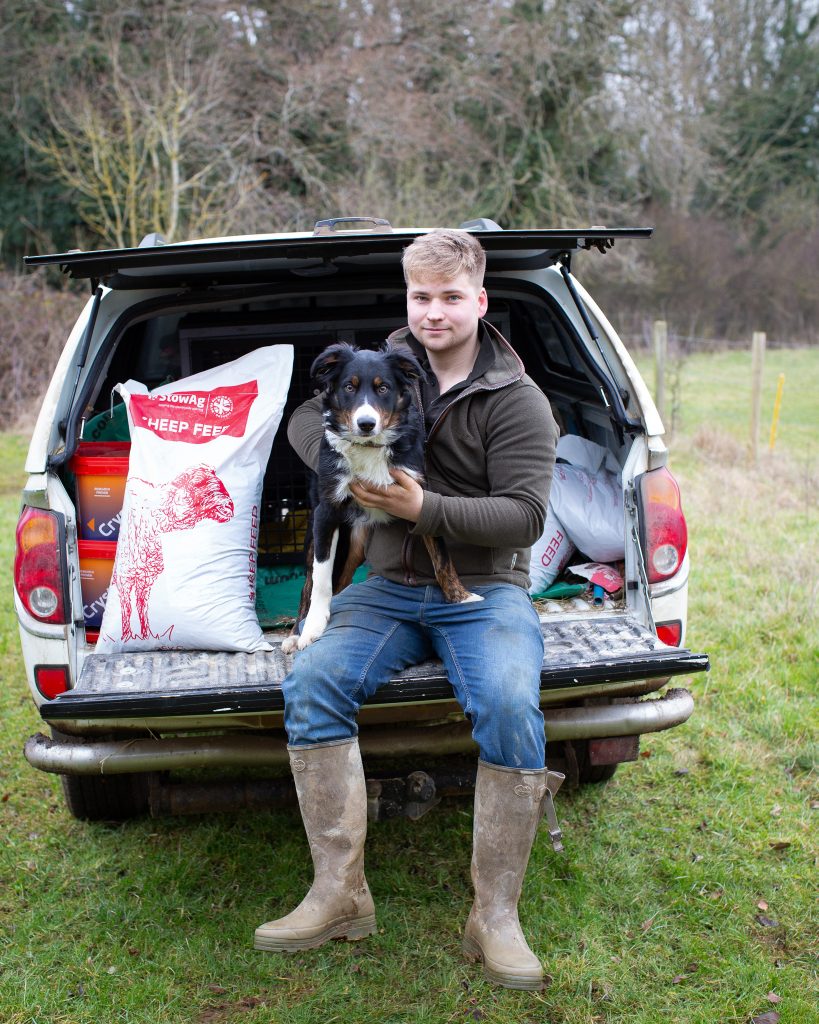
Lambing success is influenced by many variable factors with sheep feed and nutrition being one of the largest influencers particularly in last 6 weeks of the ewes gestation. 70% of foetal growth occurs during this period and subsequently increases the ewe nutrient requirements.
In this blog, Nutritionist, Jess Marshall explains how good nutrition in the late gestation period will help ensure a successful lambing period. Concentrate feed should be introduced at 8-6 weeks prior to lambing with the quantity being dependent on the nutritional quality of the forage being fed and the number of lambs. Nutritional requirements of a lactating ewe twins or triplets are 4 times higher than that of a dry ewe.
Intensive systems
Intensive indoor feeding solely relies on the nutritional content being fed by forages from either silage, straw or hay. These will be supplementing with a concentrate due to the forage not being balanced in terms of energy, protein and minerals. Normal grazing and supplements are usually inadequate due to the large challenge of the foetus growing and takes up to 30% of the ewes abdomen which reduces the available space for bulky forage or feed, and hence why supplementation is needed.
Extensive systems
Extensive outdoor feeding relies more on the grass quality which does have the potential to meet all the nutrient demands of a pregnant and lactating ewes, however the ewes body condition score, litter size and grass quality may change the ewes nutrient requirement. Extensive hill breeds weight between 40-60kg should have a BCS of 3.0-3.5 and lowland breeds weight between 70-80kg should have a BCS of 2.5. In addition to extensive systems the weather and ground conditions must be taken in to account at the lambing date. Spring grass can also contain between 10-12 MJ/KG DM and a crude protein (CP) of 16-22% KG/DM. target sword hights should also reach between 4-5cm. If wet weather commences and pouching occurs on the ground then the grass maybe damage and supplementary feeding should be considered.
Dangers of underfeeding
Underfeeding the ewe will also cause her to use her own body reserves and leads to risks of ewe mortality or pregnancy toxaemia. These may also have smaller lambs are less resistant to cold weather and will have a slower pre-weaning growth. Underfeeding will reduce the ewes intake of nutrients which is needed for:
- Maintaining the growth of foetuses
- Yield and quality of milk production
- Quality of colostrum
- Avoid the metabolic disorders such as twin lamb disease.
Dangers of overfeeding
In contrast, over feeding can lead to oversized foetuses which results in difficulties in lambing and a higher mortality rate. By overfeeding the ewe it supplies her with too much energy. Young ewes, shearlings or ewe lambs will be particularly at risk of this, as if over feeding has occurred the ewe will be more likely to produce one large lamb and increase the chance of prolapsing. Other risks is fat accumulation around the pelvic area and increases the risk of dystocia.
Best feed for sheep

Our 18% protein ewe nuts are specifically formulated to support ewes carrying singles, doubles, and even triples, promoting strong, healthy lambs. Packed with high-quality protein and fortified with Sel-Plex, an organic form of selenium yeast, these ewe nuts help strengthen immunity and overall health.
Working alongside a trusted British animal feed supplier, we’ve carefully selected nutritional formulations designed to enhance growth and maximise farm productivity. Our range caters not just to sheep but also to cattle, poultry, pigs, and multi-stock, making it an ideal choice for farmers and smallholders alike.
We’re committed to supporting British farmers with our cost-effective 25kg feed solutions, delivering more for less to help improve livestock productivity while keeping costs down.
